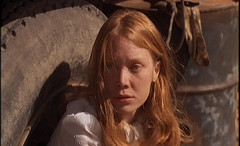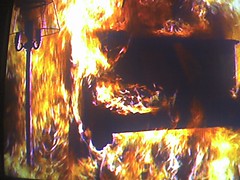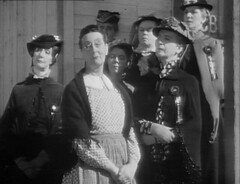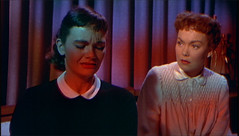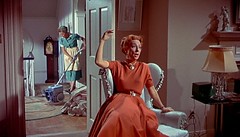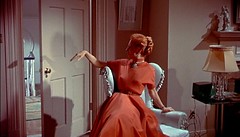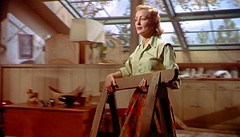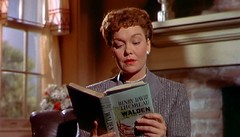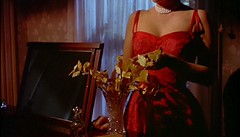When forty-three half-awake Americans touched down in a sub-tropical Athens last March, most of them had no idea what the country had been experiencing for months. No one had read a Greek newspaper, or called a distant cousin or watched a clip of international news. The only thing any of them had prepared for was the weather: balmy but windy, with the risk of chills at higher altitudes. The tour guide who picked up the mish-mosh crew of Penn State alumni, students and faculty members pointed out landmarks and bits of travel information as the bus wended its way from the airport to a hotel tucked into a corridor of Athens' crowded Center.
Tips on where to exchange currency and purchase rudimentary tourist items gave way to the overall presentation of what the tour would entail, with only a hint of warning about guarding against garden variety pick-pockets. As the bus turned the corner onto Akadamias, a statement about the student uprisings introduced the Athenian University's Administrative Building covered in graffiti and protest banners largely in Greek, in addition to tables arranged mysteriously at the building's mouth.
No mention of the riotous demonstrations that have been an ongoing part of Greek life was made, even though only two days before the plane's arrival the streets that the weary but smiling tourists now travelled had been swarmed with tens of thousands. Some had been armed with petrol bombs, some with signs, but many had just been there to make their presence known to those on the opposite end of the streets: the Greek police, dressed in full body armor to protect them from the occasional petrol bomb as they used rubber bullets and tear gas on the protesters.
That's the essential protection that the tables provide, hindering the ability of any tradition-clinging soul to simply launch tear gas or any other foreign matter into the building from the sidewalk or from across the street. Although the building is under truce, such precautions appear to have been perceived as necessary by the remainders of the protesters camped out inside the building. The identities of the sixty-one had also become a concern, as the following Wednesday the Greek courts would be trying forty-nine arrested on minor charges, many of whom had yet to meet with a lawyer and prepare a defense according to a Greek independent news source.
What was all the fuss about? The privatization of the socialized university system was identified as the instigation for the takeover. From the tour director's perspective, though, the protestors were little more than rebels without causes. "Whatever you are for," Dimitrius dismissed their position without question, "we are against." An interesting summary, considering that enough students had protested to shut down the entire public university system in Greece -- approximately 300 locales -- for over four months. The only institutions of higher learning operating in all of Greece during that time were private universities, most of which aren't Greek. All of this becomes clear slowly, over nine full days of foreign educational enlightenment.
Anna Zora takes great pride in her work as a tour guide, bearing herself as a representative of everything that Greece once was and everything that it currently strives to be. Her demeanor speaks of a country where rest and relaxation define an industry and a work ethic slowly, stodgily prevails. Her job is simple: visit ancient ruins and lecture on their significance in history and to posterity, smile with poise and grace and winning confidence and treat each guest to a gem from her acumen. Not just anybody can be a tour guide in Greece. Licensing requires a baccalaureate degree with courses zig-zagging all over the humanities and social sciences. Each site claims a complicated history which comes to life better when its archaeology is considered from botanical and zoological perspectives, economic, political and so on.
Zora's main route lies in Athens, where she guides her ever-changing flocks of bus-propelled tourists through the remaining ruins that can be witnessed best as a whole from the Acropolis. Aloft that windy summit it is easy to see the ancient path to Hadrian's arch, beyond which what's left of the Temple of Zeus still makes an impression. On the opposite bank of the citadel, the Temple of Haphaestus still stands with most of its roof or "cap" intact -- the only ancient Greek ruin that can boast that particular feat. These sites make up the tour guide's daily routine, and she cuts a memorable figure as she talks avidly and knowledgeably about the theatres and the stadiums that time has not completely forgotten, nor it seems will ever.
Despite her daily soak in such history, though, the events of modern Greece have not escaped Zora's notice. She hunkers in front of the Parthenon and talks eagerly in English of where the country has been in recent years and where the country is headed. The progress in terms of its environmental responsibilities is tangible. "Pollution is not as bad as it used to be because now we have the Metro, since the time of the Olympic games. We have the tram for public transportation, the trolley buses...so, there is a way in the last few years to, let's say, eliminate the pollution." In addition to the subway and tram systems that Athens implemented in order to host the Olympics in 2004, car owners have been placed under an ordinance that allows only cars with license plates matching a specific day of the week by odd and even numbers on the streets. After all, Athens' infrastructure hasn't changed much since 1834 when it was made the country's capital and inhabited by only thirty-four thousand. Today the number is five million, with much of that population bulging in Athens' Center.
"In the beginning, I think this system worked very well, the odd and even numbers," Zora smiles, "...but now, it doesn't help so much because all the families have at least two cars, so they can enter the Center every day." In a country so far willing to achieve and maintain Kyoto Accord compliance, it is strange to witness one of its citizens admit to an environmental failing, especially with a random method that has been implemented all over the world with mixed results. Rome allows traffic in the city based on the same system, and London requires fees of drivers that keep poorer people using public transport. [1] In Butte, Montana, where drinkable water is increasing in value, residents may only water their lawns or wash their cars on days corresponding to the same system but based on house numbers. What Greece might be lagging behind in on car pollution is swiftly made up for with its implementation of solar cells on nearly every rooftop and windmills that can power up to 75% of a region with strategic mountain-top placement.
The restlessness of Greece's youth remains a distraction, though. Zora sees the dispute the students have as a narrower issue than the generic rebellion that the tour director described. "The University students are against the new law," she says, "...they're going to make renovations and changes in the University system regarding the private universities -- public and private universities -- because so far in Greece we have only public universities and private foreign universities. [We have] public and private colleges, but only public universities...and also, they want to change the system of the exams. They are going to put a time limit, for certain periods of time that one can complete their studies." What she describes entails a great deal of nuance that requires context beyond the commercialization of the educational system and a square look at the military service that's compulsory for young men born into a country neighboring so closely with uncertain nations like Iraq and Iran and in eternal border dispute with Turkey, a country with the world's third largest military outfit.
Dimitrius points to the flaws in the educational system as a social institution, noting that it comes before higher education, and even then, "Only the best students that have written a good deal on their exams will be able to participate in Greek universities." Those who do have so far been allowed to study and complete their degrees at thir own pace. But no more, once the reform law passes. "I must say that this reform that everybody's protesting against has a couple of good things," he continues, "but I must say that it's not complete, so maybe that's why the kids are against it because it's not a really good, complete decision reform, it's just patches, like sometimes we patch the roads or highways." Zora appears to agree, albeit from a more passionate point of view that sees the students and professors aligned together on a losing front. "In a country where democracy was born, really sometimes we do not work in a democratic way, and this is something that is disappointing...the future of this country, and all the hope, the hopes of this country, are based on that. So we must do our best."
"I don't really understand anarchy myself," declares Ashley Meli, flopped on a bed at the Aryon Hotel in Athens' Center the night before the group leaves the crowded city to tour the countryside. "[Anarchy] doesn't make sense to me; like, there has to be some order to things." George Propovik, idling near her with a flower given to him by a Gypsy woman, agrees with her implicitly. "...because people are naturally evil," he asserts quietly, "...anarchy implies, like, no government and no laws and no police and all that, right? So you'd probably just have a lot of corruption." The pair of twenty year-old students didn't go to the Administrative Building, but their thoughts on the students' activities are pretty clear. Neither of them understands why privatization might be a bad thing and both agree that there are probably a lot of students who just want to go back to class, and would if they had the chance.
Yet the peaceful, almost vacation-like setting on Akadamias told a different tale earlier that afternoon. The busy banners and graffiti and poster-stapled barricade tables aside, the atmosphere at the Administrative Building was friendly and relaxed. A PA system had been set up and was blaring odd music that was neither punk nor really 80s ballads, but somewhere in between, and the 61 protestors left inside the building could be seen behind that wall of sound, milling around as though they were at a family reunion. In fact, the general mood was so pleasant that even the approach of a journalist didn't mire it too much, even though eyes narrowed. Only a short time ago, a French journalist had passed through and conducted interviews and had, according to one thin, long-haired student named Caephalus, misrepresented them entirely.
But even that was only part of the reason why the group flatly refused to be filmed; mostly, they didn't want to misrepresent any of the other participants for whom they did not feel they could speak. "A lot of us are anarchists," Caephalus said, "but not all. We all have our own political views." Shrugging through his snug green sweater, the young student relayed that not even all of the people camped inside the building for several months were students. The building, which is the face of the university and not its actual locale, was undergoing renovation when the takeover began, and one of their number was a construction worker. Anna Zora's understanding that the faculty had generally dissented with the administration was in evidence too, as one professor was demonstrating his support by sacking in with the students also every night.
Almost immediately it becomes clear that the protest and the takeover are not about privatization, despite the Club Med vibe that the square gives off. Beyond the music and new decor to boost morale and promote their cause, the students are tired. But they're more tired of obstinate channels in their society. They're tired of social issues going untreated and unnoticed, swept under a carpet to keep the hotel lobbies shiny and full. They're tired of a slow-moving government and a press that acts as lip service to that government no matter how ineffective their policies are. And they're tired of living in a country that "pretends like everything is okay when it is not." Caephalus pointed to the job situation, the government situation and the media situation, stating that they are all clearly in need of reform. "So many people are living on 600 euros a month."
Being anarchists mostly, no one person spoke for the group. Each day they assembled publicly, no cameras allowed. That was the only plan. Three hundred campuses were involved in the strike which shut down the entire university system in Greece. How they got organized, said Caephalus, was not through any one system but through several ways which he didn't divulge. He also seemed to think that there was considerably less backlash in Greece than in America where he believed that the government was much more hostile in its dealings. "If we had done this in New York," he said, "we would have gotten shot."
Only days later the law for privatization passed, changing the truce status of the square. All of the remaining protesters were escorted off the campus and quick dabs of paint were applied to the building's walls. The only souvenirs the group left behind were bits of graffiti still visible on the building's harder to deal with marble base and a few statues. Classes would resume the following week, as though nothing had ever happened. On the same day that a conference was being held inside the upstairs ballroom and lecture hall, young student tourists are snapping pictures of each other on the steps outside in the full sunshine of a fine, March day in Athens, the touched-up background setting the mood. No police oficers guard the building, nor do any university officials either. Only one man stands just inside the Doric columns and greets people as they come in. Whether the lack of concern for any more protesting is for show or not is hard to tell but it appears that for now, at least, education is back to being business as usual.
[1] Great thanks to Harry Tuttle of Screenville for making me aware of these very checkable facts about which I otherwise may have never learned.
[2] To narrow this blog's content to the trackable evolution of Unclear Pictures' upcoming documentary on modern Greek social conditions, gods in disguise, just click here and stay tuned.






